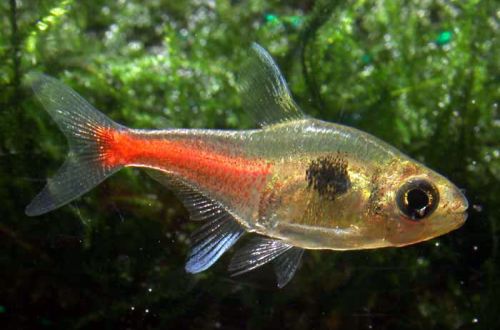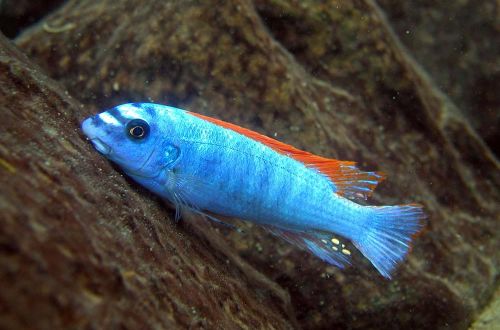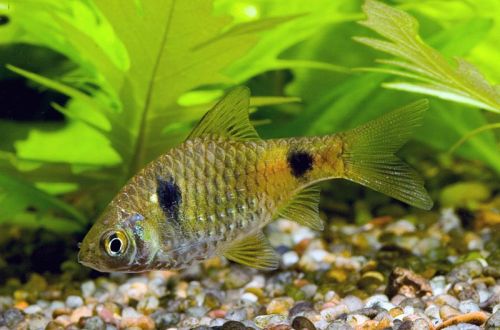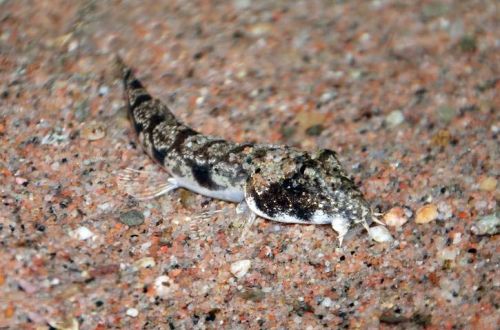
Phantom yellow
Phantom yellow or Ornatus yellow, scientific name Hyphessobrycon roseus, belongs to the family Characidae (Characinaceae). Popular aquarium freshwater fish. Easy to keep and breed, perfectly compatible with other non-aggressive species.

Contents
Habitat
It originates from South America mainly from the territory of Suriname from the basins of the rivers Korantein, Maroni and Sinnamari. The natural habitat is small streams and rivers flowing under the canopy of a tropical rainforest. The movement of water is slow, sluggish, dense crowns of trees do not let in light, the channel is littered with numerous snags, foliage, a large number of plants grow along the banks. Due to the decomposition of plant organic matter, the water acquires a rich brown color.
Brief information:
- The volume of the aquarium – from 40 liters.
- Temperature – 20-28°C
- Value pH — 5.0–7.0
- Water hardness – 1–10 dGH
- Substrate type – sandy
- Lighting – subdued or moderate
- Brackish water – no
- Water movement is weak
- The size of the fish is about 2 cm.
- Feeding – any food of suitable size
- Temperament – peaceful
- Content flocking from 8-10 individuals
Description
Adults do not exceed 2 cm in length. Sexual dimorphism is weakly expressed, males and females practically do not differ from each other outwardly. The body color is silvery-yellow with a pink or red tail. There is a large black spot in the middle of the body.
Food
Omnivorous species, accepts most popular food in the aquarium trade of a suitable size. The diet should be varied to maintain the tone and color of the fish. It is recommended to feed live or frozen brine shrimp, daphnia along with dry food (flakes, granules).
Maintenance and care, arrangement of the aquarium
Due to its size, Phantom yellow can be kept in so-called nano-aquaria, and a 40-liter tank will be enough for a relatively large flock of 15–20 individuals. The design should be made similar to the natural habitat using sandy soil, snags, thickets of aquatic plants. Although the fish are able to live in almost any environment, even in a half-empty aquarium.
Experienced aquarists often use the leaves of some trees, which are placed on the bottom. And as it happens in natural reservoirs, in the process of decomposition, they release tannins at the same time coloring the water brown. In addition, the leaves are a source of growth of microbial colonies invisible to the eye, such as shoe ciliates, which serve as excellent food for fry.
Successful keeping of this species, like many other freshwater fish, depends on maintaining stable water conditions within an acceptable range of temperatures and hydrochemical values (pH and dGH), as well as preventing dangerous levels of nitrogen cycle products (ammonia, nitrites, nitrates) from reaching dangerous levels. Ornathus yellow should only be introduced into a biologically mature aquarium. The desired stability is achieved through the placement of an effective filtration system and other equipment, as well as regular maintenance of the aquarium: weekly replacement of part of the water with fresh water, removal of organic waste (food leftovers, excrement), replacement of tree leaves, if any, etc.
Behavior and Compatibility
Peaceful schooling fish, it is recommended to maintain a group size of at least 8-10 individuals. Compatible with other freshwater fish of comparable size. Too large neighbors should be avoided, which can accidentally eat such small Phantoms.
Breeding / breeding
The reproduction strategy is typical for characins. Females scatter eggs among thickets of plants or directly on open ground, and males fertilize them. Parental instincts are not developed, so there is no concern for future offspring. Moreover, on occasion, the fish will definitely eat their own caviar and fry.
In order to preserve the brood, fertilized eggs are transferred to a separate tank – a spawning aquarium, with identical water conditions, equipped with a simple airlift filter with a sponge and a heater. A separate light source is not required, the light coming from the room will be enough. The newly hatched fry will need microscopic food such as ciliates or a specialized powdered product (supplied at pet stores). As they mature, brine shrimp nauplii, crumbled dry flake food, may be offered.
Fish diseases
Diseases inherent in this particular species of fish were not noted. When kept in suitable conditions (high water quality, balanced diet, non-conflict neighbors, etc.), health problems are not observed. The most common cause of disease is the deterioration of conditions leading to immune suppression, which makes the fish susceptible to infections that are invariably present in the surrounding area. When the first signs of an illness are detected (lethargy, exhaustion, refusal of food, lowered fins, etc.), it is necessary to immediately check the main parameters of the water. Often, the restoration of acceptable living conditions contributes to self-healing, but if the fish is too weak or has received obvious damage, medical treatment will be required. For more information on symptoms and treatments, see the Aquarium Fish Diseases section.





